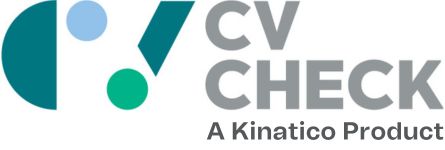Take RealMe for example, the New Zealand Government’s flagship digital identity initiative. The program creates a fully verified form of digital identity whereby identities are checked against source documentation including passports (both NZ and overseas), and certificates of births, deaths and marriages, held by the New Zealand Department of Internal Affairs.
RealMe was created to build trust and confidence in digital identity across the public and private sectors, and can be used by individuals for secure interactions such as enrolling to vote, applying for bank accounts and applying for a passport. For organisations, the benefit lies in the ability to verify the identity of people (such as job candidates and customers) and perform other checks before they interact with them.
Why is it important for digital identity to be verified?
Organisations need confidence that the people they are dealing with are who they say they are. Without a robust process for digital identification, they’re vulnerable to identity fraud, money laundering, and may even be putting their staff and customers in danger.
RealMe’s Business Development Manager, John Keene, says that with more people transacting online, organisations need a trusted system that will catch fraudsters out.
“If you have slack processes and have made little effort towards verifying digital identities, you’re putting your organisation at risk of financial loss through fines, penalties, civil cases and reputational damage.”
The problem with unverified forms of digital identity is that they are not validated at source – when a person’s identity is verified against documents such as passports, or birth certificates for example, they are irrefutably bound to the individual.
“In practice, this means someone might turn up at an organisation and present a passport with a doctored photo,” says CVCheck NZ’s Managing Director, James Sutherland.
“The passport number is right, but the photo is false. You can’t expect the average employer to be able to spot a forgery, because counterfeiting – including photo morphing – is becoming incredibly sophisticated. Verification at source is key when dealing with a criminal element.”
Why is RealMe® more credible than other forms of digital identity?
Without verification at source, most forms of digital identity carry the risk of fraud. From Justice of the Peace (JP)-certified photocopies to sophisticated identification technology such as biometric scanning, there is always the possibility that a criminal has used their photo or some biometric information with somebody else’s identity. RealMe solves this challenge by establishing uniqueness.
“We check identity across several trusted government sources,” says Keene.
“That means organisations can have the confidence that our data comes from an authoritative source. They can rely on the rigour behind those databases and processes.”
Sutherland agrees the process is robust adding:
“People know the hoops you have to jump through to get a passport in New Zealand. That’s what makes the Department of Internal Affairs such a trusted and reliable data source.”
According to Keene, the benefits of RealMe include:
How does RealMe® work as a verified identity?
- It is backed by a legislative framework.
- Each identity is federated to lock it down across all data sources to ensure no-one else can apply on that identity.
- It provides status updates to all affected parties if an identity is suspended or under investigation.
- It uses automation coupled with manual checks to maintain high veracity.
- It uses sophisticated doctoring-detection technology such as active liveness and colour light reflection to ensure uploaded photos are real.
- It is a persistent form of identity. This means users verify their identity once, then the user can use it time and time again with just a click of a button. While other solutions require people to “front up” with identity documents multiple times, with RealMe, the same identity someone created as a student can be used for applying for bank accounts decades down the track.
Take, for example, an organisation that is performing its due diligence before making an offer to a job candidate. Here are the steps involved using RealMe.
-
- If the candidate doesn’t have a pre-existing RealMe verified identity, they will be asked to apply for one.a) As part of their application, the candidate uploads an approved photo to RealMe, along with identification details such as their passport number.b) RealMe checks this person’s identity against the source documents held by the Department of Internal Affairs; the entity that owns and manages passports, births, deaths, and marriages documentation Foreign passports will be checked against the source information Immigration NZ hold.
- As part of a bundle of checks performed by organisations such as CVCheck, a request is sent to RealMe asking to verify the candidate’s identity, along with any other relevant credentials such as a driver’s license or a working with children check.
- The candidate consents to share their identity details via RealMe.
- The hiring organisation is immediately notified that the candidate’s claims are verified or unverified.
As Keene explains, privacy and security are paramount throughout the process:
“The trust and confidence users have in RealMe comes not only from identity verification but also from a privacy perspective for the individual. That’s why we built the system around the principal of privacy by design.”
This means the candidate has complete control of what is released to the hiring organisation, and RealMe will release only the details requested and nothing more. RealMe’s data minimisation and user control practices have earned the organisation a Privacy Commission Trust Mark.
For the hiring organisation, peace-of-mind comes from the robustness of the government data sources against which RealMe checks identities.
In the recruitment sector, CVCheck NZ is first-to-market in fully integrating with RealMe to create a lightning-fast and seamless identity and credential verification experience for the recruitment market.
“It’s about confidence and trust,” says Sutherland. “Our clients know that by using our RealMe integrated service, they can get primary-source identification verification through CVCheck.”




